#ADAS
Explore tagged Tumblr posts
Text
youtube
Learn more at: What is ADAS AEB Automatic Emergency Braking
2 notes
·
View notes
Text







Just some nice Pictures and a Video of the BRP Miguel Malvar (FFG-06) Guided Missile Corvette of the Philippine Navy (PN), the latest Missile-armed Vessel of the Service during the Arrival Ceremony given to it in Subic recently.
MY NOTES: Just some of the Things I noticed about the Ship from the Pictures and Video, aside from the installed Vertical Launch System (VLS) Cells: The Gokdeniz Close In Weapons System (CIWS) is a LOT bigger than I thought it would be, you can clearly see its Size from the Picture with the PN Personnel standing next to it.
It easily is around 3-4 meters tall, or 9-12 feet for you who are used to the United States (US) Standard of Measurement. I didn’t expect it to be that big, I thought it would be a bit smaller based on what I thought were the Full Scale Mock Ups (FSMU) that I saw at the Asian Defense and Security (ADAS) Events.
Also noticeable is that Screen Mesh over the opening for the Rigid Hull Inflatable Boats (RHIB), and the Cover over the Torpedo Launchers that can be lowered or raised as needed. Both of these help enhance the Stealth Characteristics of the Ship.
Among other Things, the Malvar-class Corvettes will be the first Vessels of the PN that are armed with VLS and Gun-based CIWS. The Contract for these Vessels was signed in December of 2021 under the Administration of former President Rodrigo Duterte.
SOURCES:
Department of National Defense – Philippines Facebook Page Post, 04/08/25 – 1354H {Archived Link}
Philippine Navy Facebook Page Post, 04/09/25 – 0805H {Archived Link}
#brpmiguelmalvar#ffg06#guidedmissile#corvette#philippinenavy#arrivalceremony#subic#verticallaunchsystem#vls#gokdeniz#closeinweaponssystem#ciws#unitedstates#fullscalemockups#fsmu#asiandefenseandsecurity#adas#torpedolauncher#rigidhullinflatableboats#rhib
2 notes
·
View notes
Text
I hate when people find out I'm a girl who likes Star Wars they immediately go like "Oh oh so your favorite character is Rey." Like no bro. It's Adas!
7 notes
·
View notes
Text
Why Do We Need AI-MDVR with ADAS & DSM in Vehicle Monitoring?

For long-distance truck drivers, a reliable partner on the road is essential. Ai-MDVR not only assists drivers but also provides fleet management companies with satisfactory reports. Advanced features like ADAS and DSM alert drivers to avoid unfavorable behaviors, generating valuable big data reports. By analyzing these reports, fleet management companies can monitor driving habits, gather evidence of poor behavior, and promote good driving practices, ultimately enhancing road traffic safety.
youtube
Making Phone Calls Detection & Distraction Detection.
News reports often highlight the dangers of drivers using their smartphones while driving, a leading cause of traffic accidents. Relying solely on driver awareness is insufficient to prevent this issue. The DSM system addresses this problem by warning drivers to stop using their phones and capturing evidence of phone use, which is then saved on a server for further action.
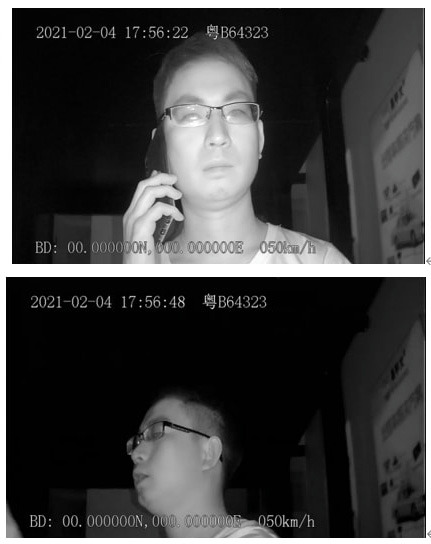
Yawning Detection & Eyes Closing Detection :
Fatigued driving is a common issue for long-distance transport vehicle drivers, characterized by frequent yawning and blinking. The DSM system detects this and immediately warns the driver to take a break, preventing potential accidents. When alerted, the driver should stop at a safe location to rest before continuing, as a moment's distraction can lead to a devastating crash.
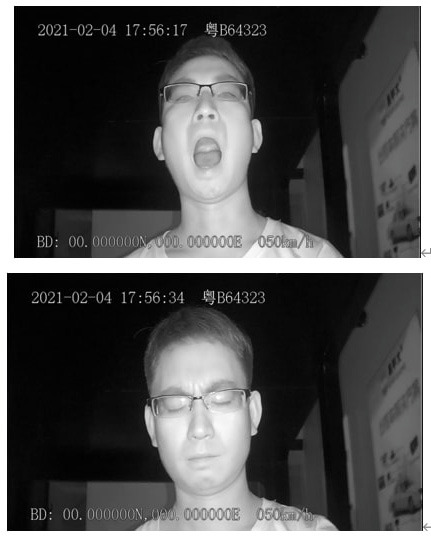
Smoking Detection & Driver Absence Detection:
Smoking in a vehicle, especially those carrying gasoline or transporting passengers, is a serious safety risk. Prohibiting drivers from smoking is a crucial policy, particularly for tank trucks and buses. If a driver is caught smoking, the DSM system will issue a stern warning, "Stop Smoking please!", and capture evidence, which is then sent to the fleet administrator, ensuring a swift response to prevent potential disasters.
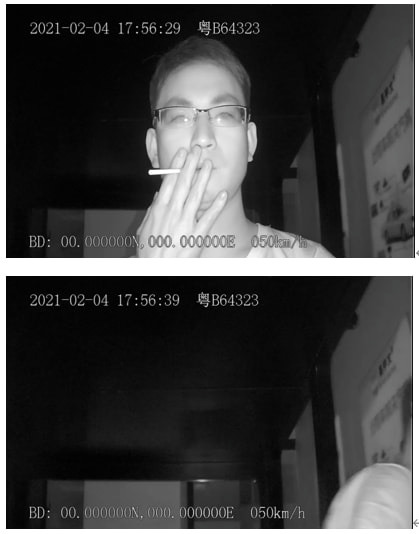
Lane Departure Warning & Safe Distance Warning :
A good driver cultivates safe habits, especially in adverse weather conditions like rain or fog, where visibility is reduced. In such situations, the ADAS system's lane departure and safety distance warnings provide crucial assistance, helping the driver maintain a safe distance from the vehicle ahead and avoid frequent lane changes. By doing so, the risk of accidents is significantly reduced, making highway driving safer.

Pedestrian Collision Warning & Forward-collision-warning:
Even experienced taxi drivers can miss pedestrians in their blind spots. The pedestrian collision detection function provides an extra layer of protection, particularly for those who may not be visible or are not paying attention when crossing the road. This feature is especially crucial for novice drivers, who may struggle to accurately judge pedestrian movements, helping to prevent accidents and ensure safer roads.

You will receive a comprehensive report detailing all DSM and ADAS alarm information.
Big data will drive future decision-making, and the Intelligent Vehicle Monitoring System (IVMS) client enables remote access to ADAS and DSM reports, streamlining fleet management. By analyzing these reports, managers can identify common bad driving behaviors, pinpoint drivers who exhibit them, and take targeted action. Additionally, Ai-MDVR provides a proactive solution to prevent accidents by allowing administrators to receive real-time alerts and intervene promptly, notifying drivers to correct hazardous behaviors through the remote platform.

Sourse
ICARVISIONS WEB
1 note
·
View note
Text

💪 Start the week off strong with with a 14 day free trial of Mitchell 1 ProDemand! No obligation. No credit card. No risk. It's 100% FREE! 🔗 https://www.m1repair.com/mitchell1prodemand
Get everything you need with our industry-leading auto repair information. From our powerful 1Search Plus search engine, exclusive real-world knowledge from SureTrack, advanced interactive wiring diagrams, labor times, OEM parts pricing, scheduled maintenance up to 300,000 miles, and ADAS repair information, we've got you covered!
#mitchell1#mitchell 1#prodemand#ondemand#auto repair#car repair#vehicle repair information#prodemand free#automotive#check engine light#auto mechanic#mechanic#ADAS#labor times#maintenence#parts#suretrack#wiring diagrams
2 notes
·
View notes
Text
Upgrading Your Vehicle's BCM: Worth the Investment?
The Body Control Module (BCM) in a vehicle is a critical component that controls various electrical and electronic systems. Over the years, automotive technology has advanced significantly, and newer vehicles come equipped with more sophisticated BCMs. This article delves into the question of whether upgrading your vehicle's BCM is a worthwhile investment, exploring the potential benefits and considerations involved. U.S. Mobile Calibrations, a trusted authority in vehicle electronic systems, aims to provide valuable insights to help you make an informed decision.

Understanding the Role of the BCM
a. What Does a BCM Do?
The BCM manages and controls various electrical systems in a vehicle, such as lighting, power windows, central locking, and more. It acts as a centralized control hub.
b. Importance of an Efficient BCM:
A well-functioning BCM is crucial for seamless operation of electronic systems, contributing to the overall comfort, safety, and efficiency of the vehicle.
Potential Benefits of Upgrading Your Vehicle's BCM
a. Enhanced Functionality:
Newer BCMs often come with additional features and improved capabilities, providing enhanced functionality compared to older models.
b. Improved Efficiency:
Advanced BCMs may optimize the vehicle's electrical systems, potentially improving fuel efficiency and overall performance.
c. Integration with Modern Technology:
Upgrading the BCM allows integration with the latest technologies, enhancing connectivity, security, and entertainment features.
d. Customization and Personalization:
Some upgraded BCMs offer customization options, enabling you to tailor settings to your preferences for a more personalized driving experience.
Considerations Before Upgrading Your Vehicle's BCM
a. Compatibility:
Ensure that the upgraded BCM is compatible with your vehicle's make, model, and year to avoid any compatibility issues.
b. Professional Installation:
Upgrading the BCM requires precise installation. It's advisable to have a professional automotive technician handle the installation to ensure it's done accurately.
c. Cost-Benefit Analysis:
Evaluate the cost of upgrading the BCM against the potential benefits it offers. Consider factors like improved functionality, efficiency, and convenience.
The decision to upgrade your vehicle's BCM is contingent upon various factors, including the model and age of your vehicle, your specific needs, and the potential advantages an upgraded BCM can provide. Consult with professionals and consider the potential benefits and costs before making the final decision.
U.S. Mobile Calibrations is dedicated to guiding you through this decision-making process, ensuring that your vehicle's electronic systems meet your expectations and contribute to an enhanced driving experience.
(FAQs) About Upgrading Your Vehicle's BCM
1. What is a Body Control Module (BCM)?
A Body Control Module (BCM) is an essential electronic component in a vehicle that controls various electrical systems, such as lighting, power windows, and central locking.
2. Why should I consider upgrading my vehicle's BCM?
Upgrading your vehicle's BCM can provide enhanced functionality, improved efficiency, integration with modern technology, and customization options, contributing to an upgraded driving experience.
3. How do I know if my vehicle's BCM needs an upgrade?
Consider an upgrade if you're looking for added features, better efficiency, or integration with modern devices. Consulting with a professional can help determine if an upgrade is suitable for your vehicle.
4. Is upgrading the BCM a complex process?
While upgrading a BCM requires precision, it is not overly complex. However, it's crucial to have a professional automotive technician handle the installation to ensure it's done accurately.
5. Can an upgraded BCM improve fuel efficiency?
Yes, an upgraded BCM may optimize the electrical systems in your vehicle, potentially leading to improved fuel efficiency and overall performance.
6. What are some features I can expect from an upgraded BCM?
An upgraded BCM may offer enhanced functionality, better connectivity, improved security features, customization options, and integration with advanced entertainment systems.
7. Are there BCM upgrades compatible with all vehicle types?
BCM upgrades are often specific to vehicle makes, models, and years. It's essential to ensure that the upgraded BCM is compatible with your specific vehicle to avoid any compatibility issues.
8. Can I install an upgraded BCM myself?
While it's possible to install an upgraded BCM yourself, it's recommended to have a professional automotive technician handle the installation to guarantee accurate and safe installation.
9. What is the typical cost of upgrading a vehicle's BCM?
The cost of upgrading a BCM can vary based on the make and model of your vehicle and the specific features of the upgraded BCM. It's advisable to consult with professionals for an accurate cost estimate.
#usmobilecalibrations#adas#ecm#bcm#electroniccontrolmodules#advancedriverasistance#bodycontrolmodule
2 notes
·
View notes
Text
Wrong: Ada Lovelace invented computer science and immediately tried to use it to cheat at gambling because she was Lord Byron's daughter.
Right: Ada Lovelace invented computer science and immediately tried to use it to cheat at gambling because that was the closest you could get in 1850 to being a Super Mario 64 speedrunner.
#history#computers#computer science#ada lovelace#memes#gaming#video games#super mario 64#speedrunning
66K notes
·
View notes
Text
Can 2.0 and Can Fd: Controller Area Network

1. Introduction to Can 2.0 and Can Fd
Bosch developed the Controller Area Network (CAN) protocol in the 1980s, revolutionizing data exchange between multiple ECUs in both automotive and industrial applications. It allows nodes, such as ECUs, sensors, and actuators, to interact via a single twisted-pair bus and was first standardized as CAN 2.0. It was perfect for real-time safety-critical activities because of its robustness, fault detection, and deterministic message priority. Let’s Dive in more into Can 2.0 and Can Fd.
2. Traditional CAN: The Current Situation

2.1 Constant Data Rate
Runs at a maximum speed of 1 Mbps, however long buses frequently operate at 500 kbps or less. Each frame has a consistent bit-rate, which restricts bandwidth.
2.2 Length of Message
Eight bytes per frame was the payload limit; this was acceptable in the 1980s but not enough for contemporary applications.
2.3 Priority & Identifier Supports 29-bit (Extended) and 11-bit (Standard) IDs:
Extended IDs (CAN 2.0B) permit more node types but have slightly slower performance; shorter IDs provide faster arbitration but fewer unique identifiers.
2.4 Determinism & Reliability
Deterministic transmission is ensured by hardware-based arbitration, which gives priority to important signals. Bit-stuffing, self-monitoring, and CRC provide robust error detection, which makes CAN incredibly dependable for safety-critical systems.
3. The Reason CAN FD Is Revolutionary
The traditional CAN architecture became constrained by the growing data requirements in ADAS, EVs, industrial automation, and over-the-air (OTA) software upgrades. A compelling case for improvements was made by these changing needs. In 2012, Bosch created CAN FD (Flexible Data Rate), which was standardized by ISO 11898–1:2015.While maintaining the benefits of CAN 2.0, this “second-generation CAN” significantly increases speed and payload.
4. CAN FD: Essential Characteristics & Benefits
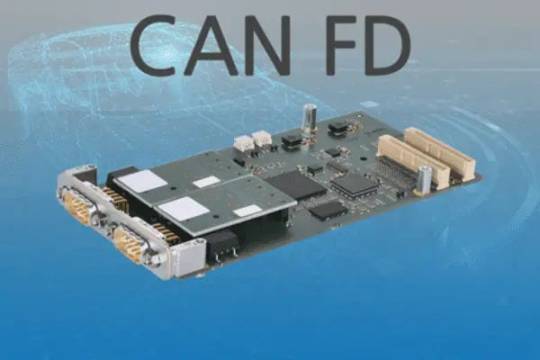
4.1 Dual-Phase Bit Rate
The data segment changes to up to 5–8 Mbps, depending on the transceiver, while the arbitration phase stays at 1 Mbps (ensures compatibility). This hybrid rate maximizes throughput and reliability.
4.2 Extended Payload
Reduces overhead and increases efficiency in high-volume data applications by supporting up to 64 bytes per frame.
4.3 Improved Error Identification
Enhances the detection of bit-level mistakes, particularly with larger payloads, by using a 17-bit or 21-bit CRC. maintains robust fault confinement strategies (Error Active/Passive, Bus Off).
4.4 Compatibility with Backward
To prevent bus problems, FD frames contain a unique indication bit that CAN 2.0 nodes can identify and disregard. As long as FD nodes have the ability to switch the arbitration rate to 1 Mbps when needed, mixed networks are feasible and can operate Can 2.0 and Can Fd frames.
5. Physical and Technical Aspects
5.1 Wiring & Transceivers
Higher bit rates (5–8 Mbps) require sophisticated SIC-CAN transceivers, like NXP’s TJA146x series, tighter capacitance budgets, and high-quality cabling.
5.2 Topology & Network Design
CAN FD is more prone to noise and signal reflections; impedance management, balanced stub lengths, and appropriate terminating are essential.
5.3 Complexity of Configuration
FD calls for more meticulous network planning, including arbitration vs. data thresholds, baud rate settings, error counters, etc., because of dual bit-rate logic and longer frames. Updated tools and the assistance of a skilled engineer are required.
6. Market Trends & Adoption by Industry
6.1 Automobile
Because of its high-bandwidth capabilities, CAN FD is essential to contemporary ADAS, battery management, and ECUs for cameras, radars, and LiDARs. Automobile manufacturers like as Daimler and GM use semiconductors from Infineon, NXP, TI, and STMicroelectronics extensively. By 2024, traditional CAN still made up about 45% of automotive communication, while FD’s market share is growing and approaching CAN XL adoption.
6.2 Heavy-Duty and Industrial Vehicles
CAN FD maintains legacy compatibility while enabling better diagnostics and control in J1939 truck and off-road systems without switching to Ethernet. Longer term, Ethernet will take over, although FD bridges the bandwidth-cost-performance gap.
6.3 Defense, Aerospace, Medical, and Robotics
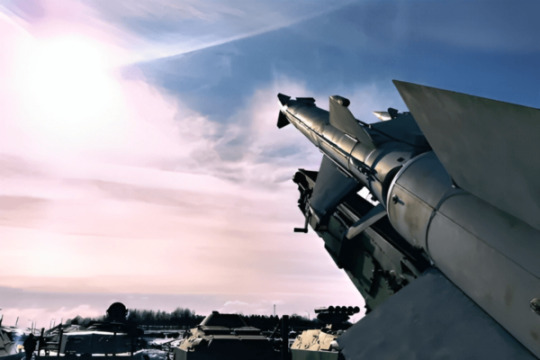
6.4 Market expansion
FD and CAN XL usage are expected to propel the CAN market’s growth from USD 5.2 billion in 2023 to USD 8.28 billion in 2024 at a about 11% CAGR.
7. Making the switch to CAN FD from CAN 2.0
7.1 Updates to Hardware
For high-phase rates, all ECUs on FD segments require controllers and transceivers that are compatible with CAN FD. It is possible to keep legacy CAN 2.0 nodes, but they must remain receive-only and arbitrated at 1 Mbps unless they are upgraded.
7.2 Tools & Software
Firmware must allow greater DLC options, checking CRC logic, and FD control bits (FDF, BRS). Updates are necessary for FDF frames and greater payloads in DBC files, diagnostic tools, and calibration software.
7.3 Wiring & PHY
Review the bus architecture by using low-capacitance components, ensuring balanced characteristic impedance, and minimizing stub lengths. Purchase higher-quality transceivers (SIC-CAN, for example) to accommodate >5 Mbps in practical configurations.
8. CAN FD vs Other Options
Higher speeds (100 Mbps+) are possible with automotive Ethernet (100BASE-T1), but it is more expensive and requires additional stacks (TCP/IP, AVB, and TSN). Ethernet manages bulk data, while CAN FD finds a balance between being straightforward, reliable, and economical for real-time ECUs.
9. Toward the Future: CAN XL
Growing network demands (CiA 610–1, up to 20 Mbps, realistic 2,048 byte payload) are driving changes in CAN XL. It provides a clear upgrade route for upcoming networks while maintaining backward compatibility with Can 2.0 and Can Fd and traditional CAN. FD will continue to be a crucial transitional technology, with early implementations anticipated in the upcoming years.
10. Summary Table

FeatureCAN 2.0CAN FDMax Data Rate1 Mbps5–8 Mbps (data phase)Payload Size8 bytesUp to 64 bytesArbitration Rate1 Mbps1 Mbps CRC Check15‑bit CRC17‑bit/21‑bit CRC Compatibility N/A Backward-compatible via FDF flag Applications Legacy vehicles, simple ECUs ADAS, BMS, robotics, industrial systems Hardware Needs Standard CAN PHYFD-capable PHY, low-capacitance wiring, SIC transceivers
11. Conclusion Remarks
CAN FD retains the simplicity and reliability that CAN is known for, while overcoming three major limitations of CAN 2.0: limited bandwidth, small payload capacity, and reduced error resilience. Its hybrid dual-rate design complements old infrastructure and provides an affordable upgrade for today’s sophisticated sensor suites, OTA-enabled systems, and ECUs. Deployment still needs to be planned carefully; improvements in hardware, accurate wiring, tool support, and skilled engineering are essential. However, CAN FD is undoubtedly the de facto standard for automotive and industrial bus systems in the foreseeable future — until CAN XL becomes widely used — given market adoption, OEM impetus, and expanding support.
Investigate Further
Explore CAN 2.0 vs. FD design in greater detail by reading the Kvaser blog post “Comparing CAN FD with Classical CAN.” Discover how to integrate IDS into CAN devices and use other cutting-edge security solutions like SecCAN.
Call to Action
If you’re exploring VCU services or products, or need CAN FD capacitive CAN keypads and CAN displays, check out Dorleco’s website or email [email protected] — we offer tailored solutions to seamlessly modernize your vehicle communications. This updated blog incorporates the latest specs, real-world adoption trends through 2025, and an outlook toward CAN XL — all while aligning with your structure and messaging. If you would like additional modification, code snippets, or further customization, do let me know!
❓ FAQ — Can 2.0 and Can Fd
1. What’s the difference between CAN 2.0 and CAN FD?
CAN 2.0 supports up to 1 Mbps and 8-byte messages. CAN FD allows faster data rates (up to 5–8 Mbps) and up to 64-byte messages.
2. Is CAN FD backward compatible?
Indeed. Although 2.0 nodes are unable to decipher FD frames, CAN FD devices are able to share a bus with CAN 2.0 devices.
3. Why do we need CAN FD?
Modern vehicles and equipment demand higher data bandwidth to support features such as ADAS, BMS, and real-time diagnostics — needs that CAN FD is designed to fulfil.
4. Is it possible to go from CAN 2.0 to CAN FD?
Yes, but it requires updated ECUs, transceivers, wiring, and software tools.
5. Outside of the automotive industry, where is CAN FD used?
It is utilized in fields where speed and dependability are crucial, such as industrial automation, robotics, aerospace, and defense.
6. Will CAN FD replace CAN 2.0?
Gradually. FD is becoming the new standard, but Can 2.0 and Can Fd will coexist for years.
7. What comes after CAN FD?
CAN XL, which supports up to 20 Mbps and larger payloads (up to 2048 bytes), is the next evolution.
8. Where can I get CAN FD solutions?
Explore our VCU products, CAN Keypads, and Display solutions by visiting dorleco.com or reaching out to us at [email protected].
#CANFD#CAN2_0#Dorleco#VCU#EVSoftware#CANDisplay#CANKeypad#ADAS#BMS#AutomotiveTech#eMobility#ControllerAreaNetwork#CANXLReady#VehicleElectronics#AutomotiveNetworking
0 notes
Link
SUV (Sports Utility Vehicle) Diesel 10 airbags V6 3.3L Turbo Not Tested
#Diesel#SUV#Automatic Transmission#All Wheel Drive#AWD#LED Headlamps#Headlamp Washers#LED Fog Lamps#Sequential Turn Indicators#Sunroof#Roof Rails#Split Rear Seat#Defogger#Power Adjustable Front Seats#Head Up Display#Wireless Charger#Power Back Door#Four Zone Automatic Air Conditioner#14 Speakers#Android Auto#Apple CarPlay#Adaptive Variable Suspension#Crawl Control#Downhill Assist Control#Hill start Assist Control#Multi Terrain Select#Multi Terrain Monitor#Panoramic View Monitor#Active Traction Control#ADAS
1 note
·
View note
Text
youtube
Windshield Replacement - What About It? Windshields have not always been "shatter proof". In 1890's auto glass was ordinary glass, and in the event of impact the glass would shatter into sharp fragments causing sever injuries and death.
In 1905, Eduardo Benedictus introduced laminated glass which consists of two layers of glass with a layer of polyvinyl butyral (PVB) sandwiched in between.
Windshield replacement has become more difficult as there are ADAS cameras, lasers and sensors that have be calibrated. OEM auto glass is still preferred by all major insurance companies.
For more information about Motor Vehicles, please visit: Auto Glass Education, Automotive Documents, Auto Glass, Auto Repair and Car Detailing Health Benefits, Auto Glass Arizona, Arizona Auto Glass, Arizona Auto Repair Shop, News Trends Forecasts, History of Kia Vehicles, Importance of Auto Repair Shop and Maintaining Your Vehicle, How to Be an Effective Auto Glass Salesman, Evolution of Auto Glass Technology, Difference Between Regular Glass and Auto Glass, How to Avoid Auto Repair Shop Fraud, History of Car Dealerships, Car Insurance and Windshield Damage, Safelite Auto Glass, Auto Glass Rates for Insurance, Car Detailing, History of Rail Car, Windshield Wipers AZ, Information on Windshield Replacement and Auto Glass, Service Tech Auto Glass Windshield Replacement, Windshield Replacement Mesa AZ, Phoenix Auto Glass Tint, Perfect Touch Auto Glass, Right Windshield Auto Glass
#information#front windshield#windshield replacement#rear windshield#auto glass replacement#auto glass arizona#auto glass education#oee auto glass#oem auto glass#adas#advanced driver assistance systems#laminated glass#Windshields#Youtube
3 notes
·
View notes
Text
#HERE Technologies#smarter#GenesysInternational#NavigationTech#DistractedDriving#RoadSafety#ADAS#3DMaps#SmartMobility#IndiaTransport#NikhilKamat#AutomotiveTech#DigitalMapping#electronicsnews#technologynews
0 notes
Text
#AutomotiveRadar#ADAS#AutonomousVehicles#VehicleSafety#RadarTechnology#MobilityInnovation#ConnectedCars#AutomotiveTech#Visiongain#SmartMobility#FutureOfTransport#electricvehiclesnews#evtimes#autoevtimes#evbusines
0 notes
Text
ICARVISIONS AI: Drive Smarter, Drive Safer
Revolutionizing Vehicle Safety Through Artificial Intelligence
ICARVISIONS, one of the leading manufacturers of MDVR technology, presents our new generation AI-MDVR system. Built on a decade of expertise and customer insights, our solution transforms everyday driving into a safer, smarter experience.

Smart Technology for Smarter Driving
Our AI-MDVR system combines advanced cameras, sensors, and real-time processing to create a comprehensive safety ecosystem. The system actively monitors your vehicle's environment, providing instant alerts and actionable insights through:
Real-time video analysis
Audio warnings
Cloud-based data transmission via 3G/4G/5G networks
Complete fleet telematics integration
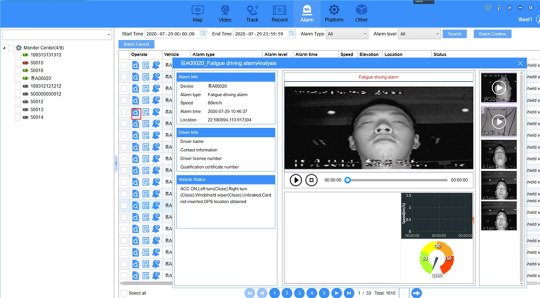
Core Safety Features
ADAS (Advanced Driver Assistance System)
Transform your vehicle into an intelligent safety companion with features designed to prevent accidents before they happen:
Lane Departure Warning: Alerts drivers when vehicle unintentionally drifts from lane, keeping you safely on track.
Safe Distance Warning: Monitors and maintains optimal distance between vehicles based on your speed.
Pedestrian Collision Warning: Detects pedestrians in vehicle's path and provides instant alerts.
Forward Collision Warning: Prevents rear-end collisions through early warning of sudden braking or slowing vehicles ahead.
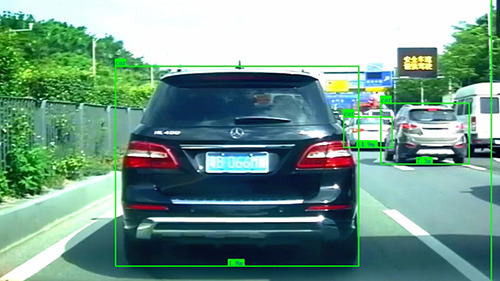

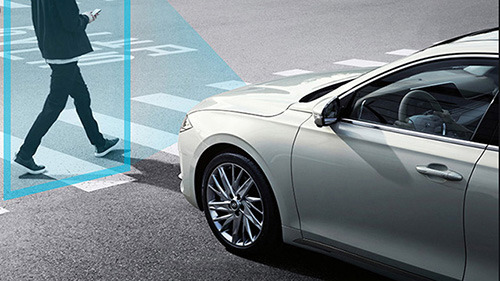
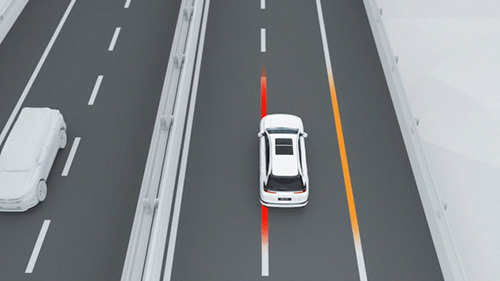
DSM (Driver Status Monitor)
The Driver Monitoring System (DSM) helps evaluate driver behavior and enhance fleet efficiency by analyzing alarm data to identify top-performing drivers. Our comprehensive monitoring features include:
Driver Authentication: Facial recognition ensures only authorized drivers operate vehicles
Fatigue Detection:
Monitors yawning patterns
Tracks eye movement and closure
Detects driver distraction and absence
Safety Compliance Monitoring:
Smoking detection
Phone usage detection
Camera obstruction detection
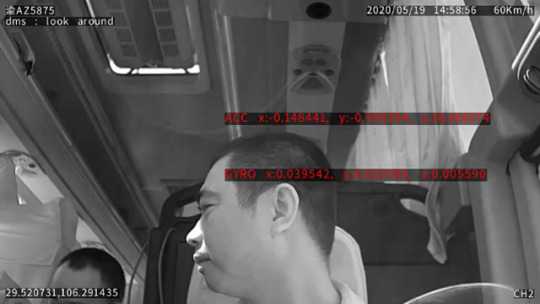



BSD (Blind Spot Detection)
Experience complete situational awareness with our advanced blind spot monitoring system:
Sound and light-based object detection
Seamless integration with video monitoring
I/O linkage for comprehensive vehicle control

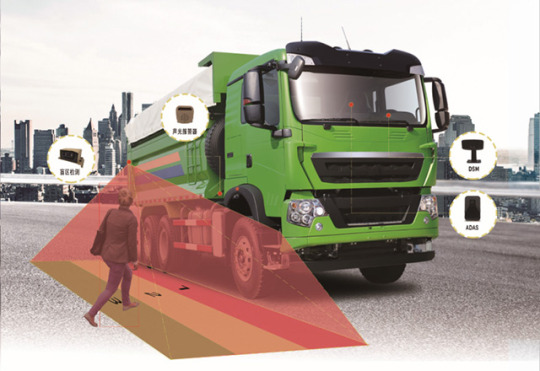
Why Choose ICARVISIONS AI-MDVR?
Proactive Safety: Prevents accidents through early warning systems
Comprehensive Coverage: Monitors both external threats and driver behavior
Fleet Optimization: Improves driver performance and reduces operational risks
Future-Ready: Leverages cutting-edge AI technology for continuous improvement
Smart Features for Every Journey
Our AI-MDVR system doesn't just record - it actively protects. By analyzing real-time data and providing immediate feedback, we help:
Reduce accident rates
Improve driver behavior
Enhance fleet efficiency
Ensure regulatory compliance
Protect your investment
Source
ICARVISIONS WEB AI
1 note
·
View note
Text
#EV#Sensors#ADAS#AutonomousDriving#SmartMobility#AutomotiveTech#MarketGrowth#FutureOfMobility#powerelectronics#powermanagement#powersemiconductor
0 notes
Text

Teaching AI to Drive Safer - Road safety starts with accurate vision.
Wisepl empower autonomous systems, ADAS, and smart city solutions by transforming raw driving footage into machine-readable intelligence.
Whether it's detecting pedestrians at crosswalks, identifying traffic signs, tracking lane changes, or annotating edge-case scenarios - our expert team labels with precision, context, and care.
We don’t just annotate data. 👉 We teach machines to see. 👉 We help vehicles make safer decisions. 👉 We pave the digital roads that save real lives.
Drive the future with us. Safer roads start here. Ready to make your AI smarter and streets safer? Let’s collaborate: [email protected]
#RoadSafetyAI#DataAnnotationExperts#AutonomousDriving#SmartMobility#ADAS#AIforGood#MachineLearning#Wisepl#DriveSaferWithAI#PrecisionAnnotation#VisionForSafety#ComputerVision#AIAnnotation#FutureOfTransport#DataAnnotation#DataLabeling#ImageAnnotation
0 notes